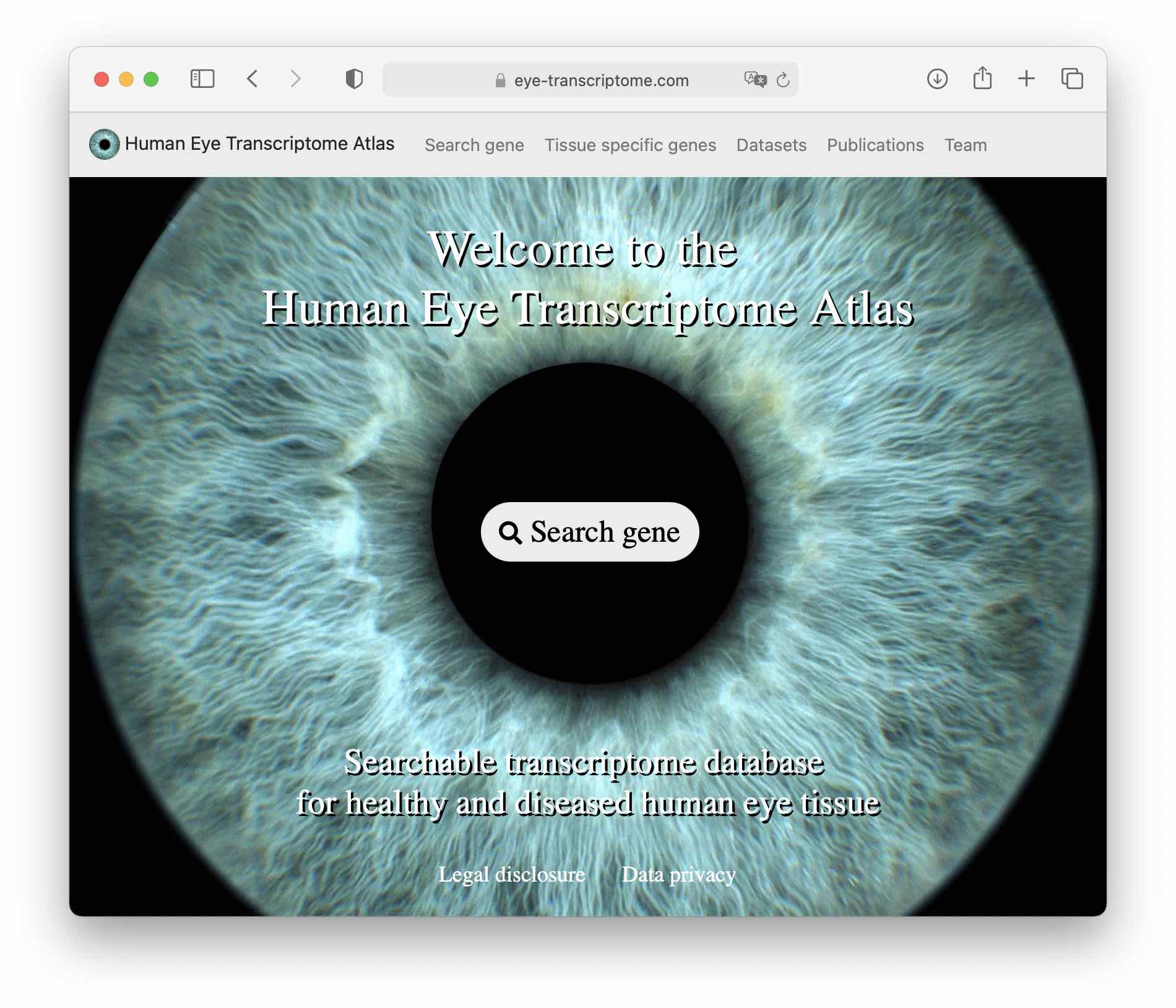
Genomics (2022)
Julian Wolf, Stefaniya Boneva, Anja Schlecht, Thabo Lapp, Claudia Auw-Haedrich, Hansjürgen Agostini, Thomas Reinhard, Günther Schlunck and Clemens Lange
Please cite this paper, when using data for your research.
Number of citations (crossref.org): Loading..., among them:
Verma et al., A multi-cohort genome-wide association study in African ancestry individuals reveals risk loci for primary open-angle glaucoma. Cell. 2024. PMID:
38242088.
Wu et al., The multifunctional human ocular melanocortin system. Progress in Retinal and Eye Research. 2023. PMID:
37217094.
Calderón-García et al., Gene expression changes in conjunctival cells associated with
contact lens wear and discomfort. Ocular Surface. 2024. PMID:
38128761.
Aryal et al., Proteomic profiling of retina and retinal pigment epithelium combined
embryonic tissue to facilitate ocular disease gene discovery. Human Genetics. 2023. PMID:
37191732.
De Jong et al., Age-related macular degeneration: A disease of extracellular complement amplification. Immunological Reviews. 2023. PMID:
36223117.

The applications of deep sequencing technologies in life science research and clinical diagnostics have increased rapidly over the last decade. Although fast algorithms for data processing exist, intuitive, portable solutions for data analysis are still rare. For this purpose, we developed a web-based transcriptome database, which provides a platform-independent, intuitive solution to easily explore and compare ocular gene expression of 100 diseased and healthy human tissue samples from 15 different tissue types collected at the Eye Center of the University of Freiburg. To ensure comparability of expression between different tissues, reads were normalized across all 100 samples. Differentially expressed genes were calculated between each tissue type to determine tissue-specific genes. Unsupervised analysis of all 100 samples revealed an accurate clustering according to different tissue types and a high tissue specificity by analyzing known tissue-specific marker genes. Bioinformatic cell type deconvolution using xCell provided detailed insights into the cellular profiles of each tissue type. Several new tissue-specific marker genes were identified. These genes were involved in tissue- or disease-specific processes, such as myelination for the optic nerve, visual perception for retina, keratinocyte differentiation for conjunctival carcinoma, as well as endothelial cell migration for choroidal neovascularization membranes. The results are accessible at the Human Eye Transcriptome Atlas website at https://www.eye-transcriptome.com. In summary, this searchable transcriptome database enables easy exploration of ocular gene expression in healthy and diseased human ocular tissues without bioinformatics expertise. Thus, it provides rapid access to detailed insights into the molecular mechanisms of various ocular tissues and diseases, as well as the rapid retrieval of potential new diagnostic and therapeutic targets.